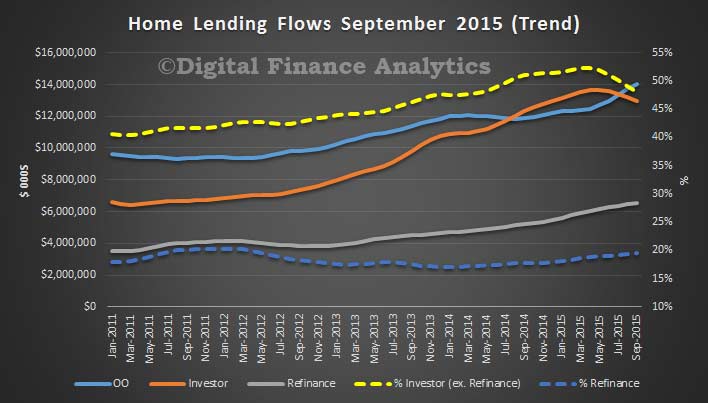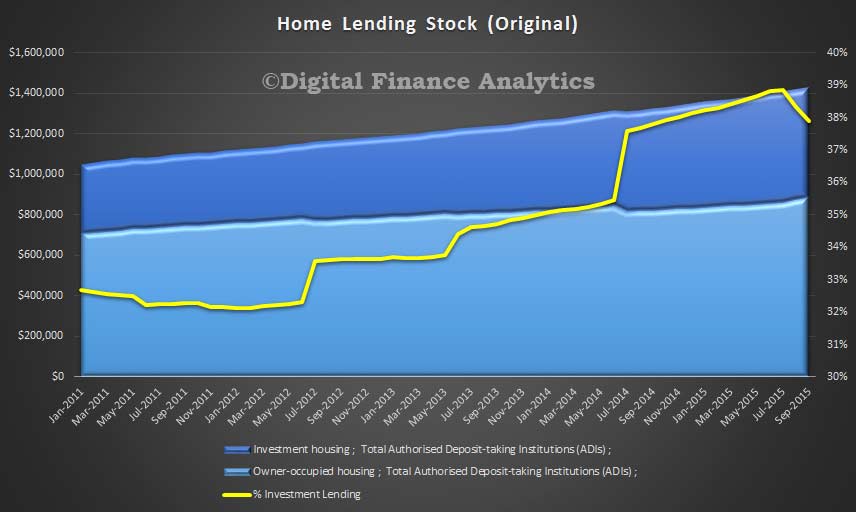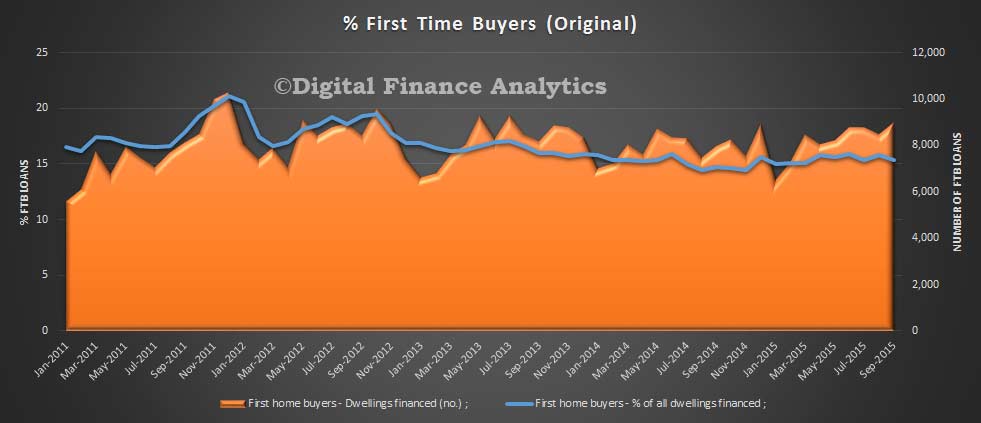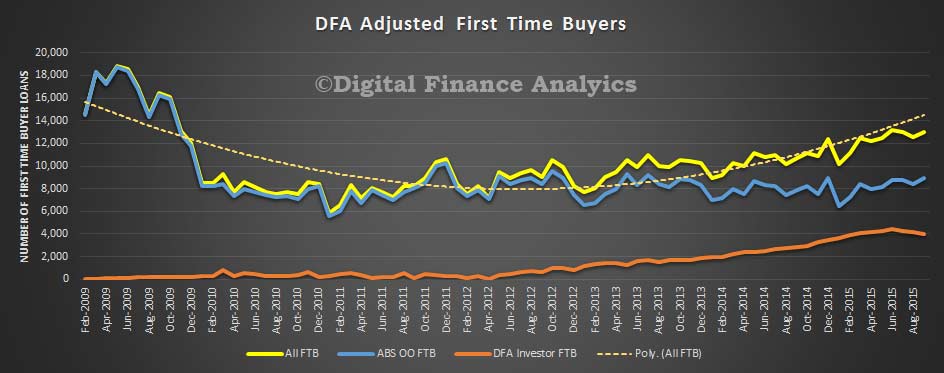The latest home finance data from the ABS confirm the trend that investor loans are on the slide, and being replaced by growth in owner occupied loans and refinancing. In September, trend, owner occupied housing commitments rose 2.0% to $20.5 bn while investment housing commitments fell 1.9% to $12.9 bn. The number of commitments for owner occupied housing finance rose 0.7% in September whilst the number of commitments for the purchase of new dwellings rose 1.3% the number of commitments for the purchase of established dwellings rose 0.8%. The number of commitments for the construction of dwellings fell 0.1%.
The proportion of investor loans fell back to 48%, whereas a few months back it was well above 50%. Refinance of owner occupied loans continues to rise, to nearly 20% of all loans written, a level not seen since 2012. So the relative shift away from investment loans is confirmed, in response to regulatory intervention.
 In stock terms, the mix of investment loans – as reported in original terms, has fallen back to 38%, but is still way higher than when regulators officially started to worry about the systemic risks of investment loans above mid thirties. we can expect to see further data revisions in coming months, as banks continue to reclassify loans.
In stock terms, the mix of investment loans – as reported in original terms, has fallen back to 38%, but is still way higher than when regulators officially started to worry about the systemic risks of investment loans above mid thirties. we can expect to see further data revisions in coming months, as banks continue to reclassify loans.
 Turning to first time buyers, the number of first home buyer commitments as a percentage of total owner occupied housing finance commitments fell to 15.4% in September 2015 from 15.8% in August. However, this does not tell the full story.
Turning to first time buyers, the number of first home buyer commitments as a percentage of total owner occupied housing finance commitments fell to 15.4% in September 2015 from 15.8% in August. However, this does not tell the full story.
 Looking at DFA adjusted data, to take account of first time buyers going direct to the investment sector, we see a further fall in new FTB investor loans, down more than 2% in the month. The number of FTB loans for owner occupation rose however, by 6%, so the overall volume of loans is up. The average FTB loan was 2% larger this month.
Looking at DFA adjusted data, to take account of first time buyers going direct to the investment sector, we see a further fall in new FTB investor loans, down more than 2% in the month. The number of FTB loans for owner occupation rose however, by 6%, so the overall volume of loans is up. The average FTB loan was 2% larger this month.
 The strategies of the banks are clear, focus on owner occupied loans, and offer deep discounts to wrest refinanced loans from competitors, whilst using back-book repricing to fund it. At what point will the regulators step-up their surveillance of owner occupied lending? We think they should do so now.
The strategies of the banks are clear, focus on owner occupied loans, and offer deep discounts to wrest refinanced loans from competitors, whilst using back-book repricing to fund it. At what point will the regulators step-up their surveillance of owner occupied lending? We think they should do so now.
